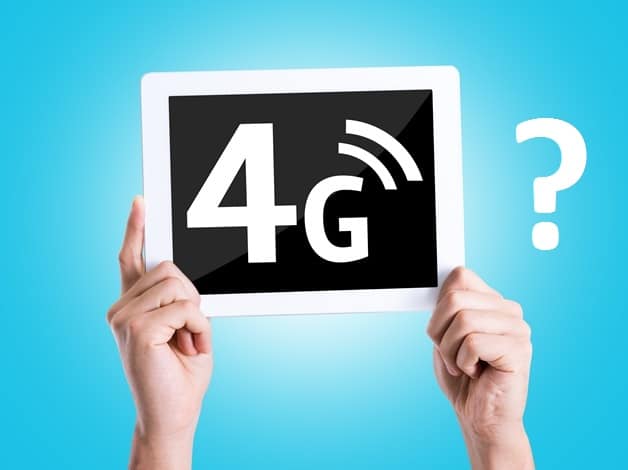Will 4G LTE Work With 5G?
Posted on 9/30/2022 by Meredith Pond
Terms relating to wireless broadband have been part of our popular lexicon for years now, but that doesn’t make them any easier to understand to the average person. Two of the most important abbreviations to know are 4G and LTE. But will 4G LTE work with 5G?
4G is still the standard for most users even as 5G is released. This may lead you to ask a number of questions about 4G LTE and how it works with 5G. How does 4G work, how does LTE work, and how do they work with 5G service? What does it all mean to your user experience and things like download speeds?

Mobile data technology and 4G LTE
The most basic thing to know is that “G” stands for “generation.” Every major shift in mobile data comes identified as its own “generation,” with considerable variances in functionality between them. These generations are broadly defined by the International Telecommunications Union and its radio sector (ITU-R). Mobile data technology started out as 2G and then evolved over time to 4G, then 5G.
The standards for the fourth generation, or 4G, came into effect way back in 2008. The speed and connection standards of a 4G network for phones and tablets had, in theory, to meet a peak of 100 megabits per second (Mbps), and for stable zones like mobile hotspots, needed to function at a minimum of 1GB per second. Such speeds were still unrealized when the standards were announced, and networks were gradually upgraded over subsequent years to catch up to elevated speeds.
What does LTE stand for?
The path that technology followed to meet elevated speeds was called Long-Term Evolution, or LTE. When 4G came out, LTE was designed to take the promise of 4G speeds and actually make them a reality. For a long time, there was a wide gap between the potential and the actual results; service was considered 4G if it at least offered substantial improvements over the previous 3G service standards.
Despite that discrepancy, any progress toward 4G technology was immediately noticeable as an improvement over 3G. What might have been considered a marketing gimmick of companies proclaiming their technologies to be “4G LTE” if they were simply on the path to improvement was, thus, not completely false. A further wrinkle came up with the abbreviation LTE-A, “Long Term Evolution Advanced,” which came to denote services that were at the leading edge of development.
How does LTE work?
LTE moves large packets of data to an internet protocol system (IPS). Old ways of moving data used Code-Division Multiple Access (CDMA) and the Global System for Mobile Communications (GSM), but those methods moved only small amounts of data. LTE can handle much more data transfer, and it helps streamline your service.
The basic improvements that LTE offers could be summed up as a reduction in data transfer latency, or delay. It can be usefully likened to removing speed bumps in a road, allowing traffic to move faster. Lower transfer latency means data moves faster, providing the basic benefit of being able to do things with mobile devices that the slower speeds of earlier-generation cellular networks simply couldn’t accomplish.
LTE vs. 4G: is LTE better?
For most of the period of 4G’s development and the evolution of LTE, this hasn’t been the right question to ask. LTE and 4G simply evolved together, with LTE denoting the forward edge of fourth generation (4G) advancement. As LTE progressed, 4G networks used it to come gradually nearer to closing the gap between theoretical limits and practical ones. This in turn came to have more and more noticeable benefits, such as the steady spread of high-performance mobile video (3G networks could play video but typically at much lower resolutions and with periodic data buffering).
What are LTE standards?
Still, for some years, LTE didn’t denote anything remotely similar to the true ITU-R service standards for 4G. Neither did Evolved High Speed Packet Access (HSPA+), another recognized 4G cellular network technology. It was largely due to marketing pressures and the fact that the newer technologies were noticeably excelling 3G service that the ITU-R was persuaded to allow cell carriers to market LTE and HSPA+ as “4G,” even though these technologies still fell well short of actual 4G speeds.
How many Mbps is 4G?
While speeds vary based on network service and type, 4G speeds are generally right around 50 Mbps. The term 4G LTE still largely identifies points along this gradual curve of progression toward the official standards.
As used today, it’s slowly coming closer to being interchangeable with “true 4G,” meaning 4G networks that are nearer to matching the original, aspirational ITU-R standards; but still, even peak 4G LTE speeds on the best carriers don’t exceed 50 Mbps. Even now, a “4G LTE” or “true 4G” network may or may not have higher practical speeds than a network simply designated 4G.
In other words, the gap between theoretical performance and real-life standards still isn’t completely eliminated. The gap on 4G networks continues to close even as 5G rolls out, leading to a growing proportion of American wireless users who identify themselves as being largely or entirely smartphone users as opposed to accessing the internet through home broadband.
Will 4G LTE work with 5G?
In a word, yes. 4G LTE functionality has two key preconditions: a network that supports the ITU-R standard speeds and a device powerful enough to match and handle the speeds of that network. A phone that theoretically could handle top 4G LTE or “true 4G” speeds can still only go as fast as the traffic of your carrier’s network can handle. Conversely, even the fastest network can only compensate so much for a device that simply doesn’t pack the necessary “oomph.”
It’s still a rarity that both of these key preconditions can be fully satisfied. 4G LTE availability will likely continue to broaden even as 5G mobile service becomes more available, and the next step forward in mobile service commences.
In keeping with prior progress in mobile data networks, the fifth generation or 5G is meant to deliver multi-Gbps data speeds up to 10 Gigabits per second — a hundred times faster than 4G’s theoretical specs and 250 times faster than America’s current fastest LTE networks — leading to ultra-low latency and increasingly uniform experience for more users. The full extent of its impact has yet to be seen.
Just as 4G LTE is still growing toward meeting its theoretical peak specs, 5G will take some time to come into its own. There will likely be years during the transition in which 4G LTE networks will continue to advance and improve, meaning they’ll be with us for a while yet.
Getting the most out of your 4G LTE service may require some savvy strategies, particularly in weak-signal areas. weBoost cell phone signal boosters can be the key you’ve been looking for to speed up your mobile downloads and uploads, and we provide boosters for vehicle, home, and business use.
Visit us online to find out more about our products or contact us by phone at 1-866-294-1660.




